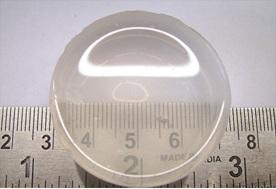Using AI to control energy for indoor agriculture
30 September 2024
Published online 22 April 2010

A new paper, co-authored by Yu Han from the King Abdullah University of Science and Technology (KAUST) in Saudi Arabia, documented how doping upconversion nanocrystals (capable of converting near-infrared light into a visible emission) with the rare earth elements of the lantha nide series in specific concentrations can change the size, shape and emitted colour of the crystals.
The doping allowed conversion of the crystals from cubic to hexagonal shape by heating at a temperature of 230 °C for 2 h. Without doping, this reaction takes >20 h at a temperature of 300 °C. The researchers were also able to create ultra-small crystals of only 10 nm in size\ by merely increasing the concentration of the dopant. To reach a size of <<25 nm without lanthanide doping requires using toxic precursors and hazardous solvents. Addition of traces of lanthanides for doping also allowed the colour emitted by the crystals to be changed from green to blue. The paper suggests this can allow the upconversion nanocrystals to be used to make volumetric three-dimensional displays.
The doping technique allows the production and tuning of these very small crystals to be achieved easily by modifying only one variable, which is the concentration of the dopant.
Full access to the original paper can be found through Nature Middle East's "Our Picks" page.
doi:10.1038/nmiddleeast.2010.140
Stay connected: